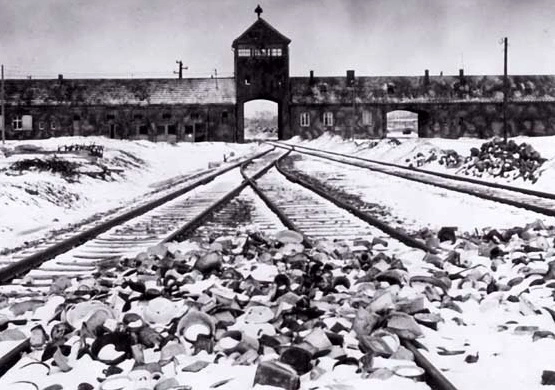Auschwitz extermination camp
Publié le 22/02/2012

Extrait du document

Oswiecim was one of many towns in southern
Poland annexed to the German Reich after the fall
Auschwitz extermination camp 135
of Poland in 1939. Germans called it Auschwitz,
and it was here, outside the town proper, that a
complex of three particularly infamous Nazi extermination
camps were built during 1940–42.
Auschwitz I, built in June 1940, was intended to
hold Polish political prisoners. Auschwitz II, also
known as Birkenau, was much larger and could
accommodate more than 100,000 inmates; it
opened in October 1941. Auschwitz III developed
from a camp at Monowitz, a facility that supplied
slave labor for a nearby I. G. Farben synthetic rubber
and oil works. At Birkenau, gas chambers and
crematoria were installed, primarily to murder and
incinerate Jews as part of Adolf Hitler's Final
Solution. It is reported that by 1944, more than
6,000 inmates were murdered each day. About a
quarter million Hungarian Jews were killed here
during a single six-week period. Birkenau was also
the site of grotesque and sadistic medical "experiments"
performed by Dr. Josef Mengele, known
as the "Angel of Death."
A resistance movement developed within Auschwitz,
though very few inmates managed to
escape. Two who did in 1942 first carried to the
world reports of the genocide. Three more escapees
in 1944 carried even more horrific reports. A
major revolt took place in October 1944, when
slave laborers at a nearby armaments plant managed
to convey explosives to some inmates. These
were used to blow up a gas chamber, and in the
resulting chaos 250 inmates escaped, only to be
shot down. An additional 200 inmates, accused of
complicity in the uprising, were also executed.
All three camps were liberated by advancing
soldiers of the Red Army in January 1945. However,
before their arrival, the Waffen SS began the
demolition of the camp and "evacuated" all ambulatory
inmates to Germany. They left behind the
sick and dying—as well as mountains of corpses
awaiting cremation. The Soviets hurriedly
announced that Auschwitz had been the place of
death for some 4 million. This was a gross exaggeration,
but the reality was horrific enough: 1.2
million to 1.5 million killed, of whom at least
800,000 were Jews.
Liens utiles
- L'horreur concentrationnaire, le camp d'extermination d'Auschwitz
- Auschwitz : entrée du camp
- CAMP DES FOUS (Le) (résumé & analyse)
- Einsatzgruppen et camps d'extermination
- CHEVAUCHÉES D’UN AIDE DE CAMP et autres poésies (résumé & analyse)


